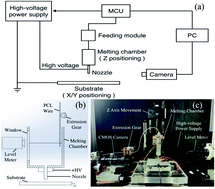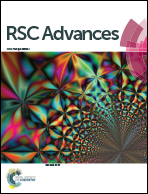Start-up stage with improved resolution for an electric field-assisted fused deposition
Abstract
Electric field-assisted fused deposition modeling (E-FDM) is a promising technique in the field of 3D printing. This paper studies the start-up stage of the printing, which is a process of liquid gradually deforming and making an initial contact with the substrate under the action of electric stress. Polycaprolactone, a popular material for biomedicine, is selected as the printing material. With a home-built E-FDM system, the nozzle-to-substrate distance and the nozzle and substrate temperatures are all held steady. With a photography system, the process of meniscus deformation is recorded. And by image processing methods, the meniscus length and the volume of liquid at the nozzle can be obtained. At a set of initial liquid volumes (Vi), nozzle voltage is ramped to a fixed value at a fixed rate. The effects of Vi on the meniscus deformation during the start-up stage of the printing are examined. For sufficiently small Vi, the meniscus deforms into a conical (Taylor cone) shape, and a fine jet with a diameter much smaller than the nozzle diameter appears. For sufficiently large Vi, the meniscus exhibits a spindle shape when it touches the substrate. At an intermediate Vi, a Taylor cone is formed, tending to eject a fine jet. After a short period of stagnation or even a slight retraction, no liquid is emitted. Through this study, it is suggested that for high-resolution printing, ramping the voltage at small Vi may be preferable. This proposition is preliminarily confirmed in a direct writing test.



 Please wait while we load your content...
Please wait while we load your content...